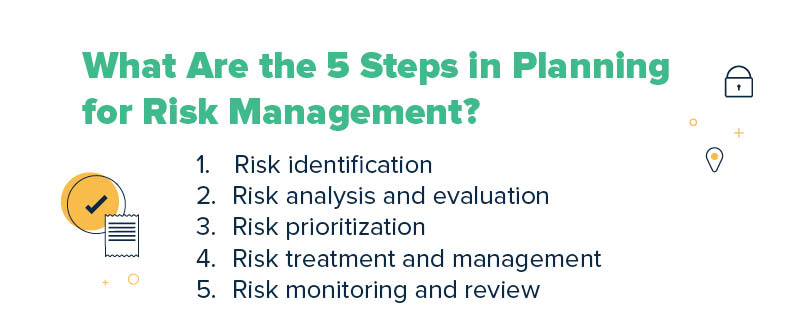
If you’ve been involved in a construction project before, you know that the construction industry is fraught with unexpected challenges and delays. Unwanted outcomes like disrupted timelines, inflated costs, and compromised safety are unfortunately common.
While these can’t be avoided completely, effective risk management and third-party risk management are crucial in adequately preparing for them. Pre-project planning plays a vital role in identifying and addressing these risks early, creating a structured approach to mitigate potential issues.
In this blog, we’ll cover the necessary steps for developing a risk management plan, including identifying, assessing, and controlling threats so you can keep your projects on track and within budget.
How to Write a Construction Risk Management Plan for a Construction Project?
Creating a construction risk management plan for construction projects is essential to avoid disruptions, financial losses, and safety issues. This process involves several key steps to ensure all potential hazards are accounted for and effectively managed.
- Define the objective and scope of the project. Begin by clearly outlining the project’s goals, timeline, and scope in order to establish a framework for identifying risks that ensures all stakeholders are aligned to begin with.
- Identify potential risks and uncertainties in the construction process. Conduct a comprehensive review of potential risks that could occur. For construction, consider factors like weather, site conditions, labor availability, material procurement, equipment malfunctions, and applicable safety program elements. Additionally, the specific challenges and risks present at the construction site should be considered.
- Assess the impact and probability of identified risks. For each risk, evaluate the potential impact on project cost, timeline, quality, and pre operational safety planning. Determine the probability of each risk occurring and categorize them by severity so your team can focus on the most critical threats.
- Develop strategies to mitigate risks. Develop actionable strategies to manage identified risks, starting with the liabilities with the highest likelihood and potential impact. These strategies could include contingency plans, alternative material sourcing, labor backups, insurance requirements, investing in quality control measures, and more. Assign responsible team members to each risk to ensure accountability.
- Document the risk management approach in a detailed plan. Record all the findings, risk assessments, and risk mitigation plans in a formal risk management document that is accessible to all stakeholders. This will ensure that everyone is aware of potential issues and that there is a plan in place to address them.
Find out what are the five 5 elements of risk management!
What Are the 5 Steps in Planning for Risk Management?
Effective construction risk management involves a structured, five-step construction risk management process:
- Risk identification. Brainstorm with your team to identify all possible risks – financial, operational, site-specific, or otherwise. This includes identifying various construction risks, such as financial, operational, and environmental hazards.
- Risk analysis and evaluation. Analyze each risk to understand its probability and potential consequences.
- Risk prioritization. Categorize risks by their threat level to the project. Prioritize the risks that need immediate attention and identify those that are less critical.
- Risk treatment and management. Implement specific strategies to treat or manage prioritized risks. Depending on the situation, this could include accepting, avoiding, mitigating, or transferring liability.
- Risk monitoring and review. Regularly monitor risks throughout a project’s lifecycle. Remember that new risks can emerge, and others may evolve over time. Update your risk management plan as necessary to ensure that it remains relevant. Effectively integrate safety management as new information is found.

What Are the 4 Major Steps of Project Risk Management?
The TPRM process can also be broken down into four major steps, which we’ll cover below:
- Risk identification. Catalog all potential project risks, going down your list of third-party partners and other potential financial, legal, or environmental liabilities. This includes identifying potential financial risks that could impact the project’s budget.
- Risk assessment. Evaluate the severity and probability of each risk. Use qualitative and quantitative analysis to determine which risks are most threatening to project success. Additionally, assess the potential safety hazards that could pose risks to workers on site.
- Risk response planning. Develop mitigation strategies for handling each identified risk. These could include methods to mitigate the impact, prepare contingency plans, or avoid the risk altogether.
- Risk monitoring and control. Track risk management effectiveness throughout the project’s process. Adjust strategies as needed to address changes in the project or external conditions that could introduce new threats.
The Importance of Pre-Project Planning Risk Management
Pre-project planning and risk management in construction are essential to ensuring that a project gets completed successfully. Project managers play a crucial role in overseeing these efforts and ensuring that all potential risks are accounted for.
By proactively addressing potential issues, teams can avoid costly delays, protect worker safety, and maintain quality standards. Identifying and managing risk factors early on can prevent costly delays and ensure project success. A well-documented risk management plan will provide the roadmap for navigating potential challenges and help ensure that everyone involved in the project knows their risk management role and is prepared to respond swiftly and effectively.
We’ll close today by once again highlighting the importance of ongoing evaluation and adaptation in your risk management efforts. Construction projects are dynamic, and risks are ever-evolving. More than ever, companies must remain adaptable in their management strategies.
Proper risk planning will lay a solid foundation for project success; regular monitoring and ongoing flexibility will ensure a safer and more efficient process throughout.
Strengthen Your Project’s Risk Management Today
myCOI helps construction teams streamline compliance and manage insurance certificates efficiently, reducing risk exposure and protecting against costly claims. Learn how we can simplify your construction projects and support proactive risk management by giving us a call today.